

GETTING GREAT AT YOUR ART
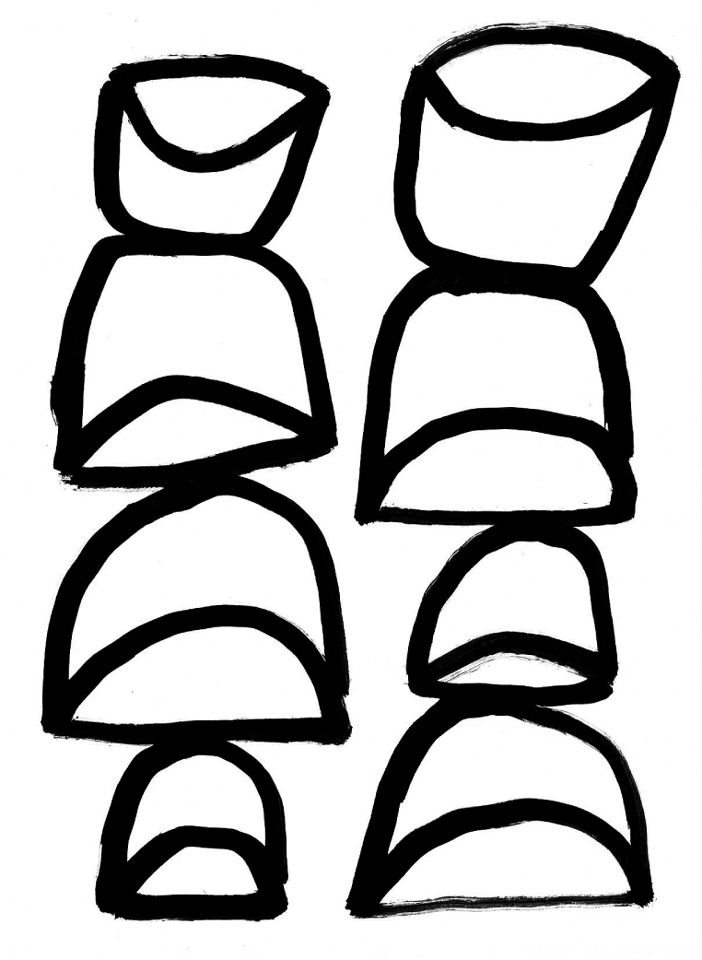
How exciting would it be if you had that dream art job that you’re secretly dying for? To help you get on the right path, I’ll tell you what I have found to be the secrets of success from many years as an agent and artist.
We’ll also take a good, hard look at what makes a great piece of art. Now that you’ve tapped into your passion, making a great piece is going to come more easily. But it still requires plenty of good old-fashioned hard work. To get ready to sit down and work, rituals really help. I’ll help you create a foolproof ritual for yourself, uniquely customized to your temperament. I’ve asked some of my artists to share their rituals, too.
And how would you like to learn the five secrets of life for the creative person? Read on to find out what they are. I’m going to work you hard in this chapter so that you’re ready when we get to the various markets for your work.
When I lecture, people often ask me, “What’s the best promotion?” My answer may surprise you: Great work is the best promotion. It’s so much easier to get work when your art is great. You have to do less promotion. Every promotional will get more results, too. You have to struggle much less. So the question becomes, “How do you make great work?”
Of course, there is no formula. But over the many years that I’ve been working with great artists, I have found some commonalities. Let me tell you what they are.
1. Put your art first. Not all the time, but a lot of the time.
2. Stay physically fit, eat well, and get exercise. You will need a lot of energy for your brilliant career.
3. Continue to evolve your talent, either by taking classes or going to art retreats or conferences.
4. There is no substitute for the hard work of just sitting down and making pieces. Watch less TV and make more art!
5. Stay open. It’s an opportunity to learn from others.
6. Manage your emotions either through journaling, therapy, friends, or meditation. (Meditate, meditate, meditate.) Mental health is key. You will need it for the ups and downs of a creative career.
7. Figure out how to stay inspired. How do you keep yourself excited about your work?
8. Make lots of art. And do it when you have your best energy, not when you are fatigued. Figure out when you are most rested and energized.
9. Make your very own pleasant ritual for getting started in your studio or work space. (More on rituals later in this chapter.)
10. Find a way to get emotional support, either by joining a group or starting one of your own—maybe with a friend who loves to do creative things with you.
11. Visualize your success. Use positive affirmations for what you want to achieve. Create a one- or two-sentence mission statement.
12. Learn to listen to your instincts. Don’t dumb down your style or taste level. Don’t create for who you perceive will buy your work. Create what you would buy.
Art by our artist Silvia Portella. Why this is great: Her style is recognizable; she’s created a rich, enchanting world; the colors are more thoughtful than the primaries and secondaries. The quality of the piece is at a high level throughout. While Silvia is originally from Barcelona and now resides in Berlin, she is influenced by Japanese art.
Jillian Phillips (Dorset, England): I spent a lot of time drawing when I first started out. I started to sacrifice my social life, I have to admit, and I would spend hours at the computer working out how to get the drawing style I wanted.
I’ve always collected cutouts from magazines, taken photos everywhere I visit, and looked at artists’ blogs, just to be aware of what other people are creating. You have to sort of soak up all that creativity, then put it away and start drawing what you like, really tapping into your own imagination. (I’ve found that it gets a little crowded in there sometimes!)
I also love doing research trips with my creative friends. It’s so fun when you both get excited about something you’ve seen, and start talking through ideas together.
Bonnie Dain (Rome, Italy): I took art classes wherever I could find them. When I was in high school, my artistic guide and guru, Mr. Schwab, held summer school painting seminars for advanced students who didn’t mind spending their summer days learning oil painting techniques in a school classroom. I loved it. I also took painting classes at the local community college after school.
Linda Ketelhut (Austin, United States): Through practice—lots of sitting down and sketching and observing other people’s work. Plus, really looking at the details of things. But beyond just the practice, art is an extension of who I am. So as I continue to challenge myself and grow as a person, so does my work. It’s important to find your own voice and to bring that to every piece you do. I find that the more I’ve learned who I am as an illustrator, the better my art has gotten. Opening myself up to new materials and mediums has been helpful in bringing a whole new life to my work and keeps me excited about creating.
Lisa DeJohn (Los Angeles, United States): I made a decision in my twenties that making art was my favorite thing to do out of everything else I had tried. I carved out time for making art and made as many pieces as I could until it became a practice. I tried lots of different materials and committed myself to doing work that was fresh, beautiful, and true to my heart.
Why this piece is great: Each item is stylized with care and delight. It’s girly but not sappy. There’s a variety of typography, line art, texture, and solid shapes. Edgy girls. And yellow and black! A highly-restrained palette.
When you read these observations from two Lilla Rogers Studio artists, you’ll see some common themes: dedication, hard work, and lots and lots of hours at the drawing table.
Sarajo Frieden (Los Angeles, United States): Malcolm Gladwell, in his book Outliers, posits that the key to success in any field is to practice a specific task for around 10,000 hours. Ira Glass talks about creativity by describing that for beginners, one’s taste level exceeds one’s abilities. It’s that way for most people, and it’s important to just keep at it. I would also argue that after you’ve been working at something for a while, you have to keep risking—working beyond “good taste,” which is easier to do but can also be less interesting.
Jessica Allen (Barrington, United States): I think the only way to get better at something is to do it. Reading about it, studying it, and thinking about it are all important, but doing it is the only way to improve.
What does a great piece of art or craft look like? Are there certain qualities or commonalities?
An exceptional piece of art must have great design, great drawing, and great color. The subject matter or content should be tantalizing and fresh. Think of yourself as a photojournalist or a stylist; no clichés, please.
For great craft, the quality of execution is important. Delight your audience. Crafters are looking for something new. Your love of your materials comes through. The piece begs to be touched.
The style must be your own. No one works in a vacuum, and it’s okay to be a mix of trends and influences. But you will not get far if you copy or are too highly influenced by someone else’s work. You will always be a second-rate imitation, and you know deep down that copying is stealing. (It’s not the sincerest form of flattery, believe me. Even kids resent having their work copied.)
Every square inch of the piece should be of the same high quality. If you look from corner to corner to corner to corner, the whole piece should have the same level of professionalism throughout.

In this piece by Adolie Day, there’s so much to savor. The beautifully rendered face; the dreamy clothing she’s created, including the peacockfeathered socks; the decorations around the edges; and the very controlled color palette: dusty maroon, pink, dark olive, and grey-blue.
Let’s face it. We all have days when it’s hard to get down to business and make some art. You may have a deadline and you’re feeling pressure. You may be procrastinating.
Here’s an effective tool to help you ease into the work process. You know how musicians start with scales to warm up? Well, now you’re going to make your very own getting-started, get-down-to-work, get-busy ritual.
What makes a good ritual?
 It’s repeatable.
It’s repeatable.
 It’s short and sweet.
It’s short and sweet.
 It’s concrete and specific.
It’s concrete and specific.
 It’s pleasurable.
It’s pleasurable.
 It gets you out of a left-brained analytical state of mind to a more sensual right-brained state of mind.
It gets you out of a left-brained analytical state of mind to a more sensual right-brained state of mind.
 It involves multiple senses: auditory, tactile, visual.
It involves multiple senses: auditory, tactile, visual.
Pick three to five of these ideas, or come up with your own ideas, and plan a ritual that will help bring focus and energy to your day.
 Make a cup of your favorite tea in your favorite mug.
Make a cup of your favorite tea in your favorite mug.
 Read the paper at your work desk.
Read the paper at your work desk.
 Go for a short walk first.
Go for a short walk first.
 Plan to work during your favorite radio show.
Plan to work during your favorite radio show.
 Pet the dog.
Pet the dog.
 Peel and eat an orange.
Peel and eat an orange.
 Organize your pencils.
Organize your pencils.
 Put on a specific song.
Put on a specific song.
 Do three downward dogs.
Do three downward dogs.
 Read your favorite poem aloud.
Read your favorite poem aloud.
 Chant.
Chant.
 Repeat the affirmation “I love making art” five times.
Repeat the affirmation “I love making art” five times.
 Draw a cat.
Draw a cat.
 Draw five silly faces.
Draw five silly faces.
 Be silent and listen. Write down everything you hear for three minutes.
Be silent and listen. Write down everything you hear for three minutes.
 Draw three cacti in pastel.
Draw three cacti in pastel.
 Look at your creativity shrine and chant three oms.
Look at your creativity shrine and chant three oms.
 Set out your paints in your palette.
Set out your paints in your palette.
 Knit or crochet a three-inch square.
Knit or crochet a three-inch square.
Q: What are your rituals? How do you get yourself to sit down and work? Do you think about it beforehand? Do you make coffee a certain way first? Do you put on music, or a favorite sweater?
Jessica Allen (Barrington, United States): To get myself to sit down and work, sometimes it takes very little—a sharpened brightly colored pencil, or a found combination of colors might be enough to get me started. Other times, it takes quite a bit of mental cobweb clearing and a good pep talk. A crisp white sketchbook can be both inspiring and intimidating. I have to remind myself that sometimes inspiration comes from the process itself.
Bonnie Dain (Rome, Italy): Before I start a project, I have to organize and clean off all of my work spaces so I can sit down and really focus. Then I’ll do research online and build up ideas in my head, then pin those ideas on my reference board or sketch small things in a sketchbook. When I’m ready to go for bigger sketches, I always do quick pencil sketches first with layers and layers of tracing paper so I see clearly what the final will more or less be like. Then I dig in and really begin.
Allison Cole (Providence, United States): I am a big fan of sketching and jotting down ideas in my sketchbook in a loose and informal way, then creating my final art on a fresh sheet of paper based on my sketches. If I’m having trouble concentrating, I might listen to an audiobook so that my mind has something to focus on while I’m drawing or creating final art on the computer.
Macrina Busato (Madrid, Spain): I always have a good breakfast with my family—fresh orange juice, fresh fruit, poached egg, ham, and cheese or homemade yogurt. Then we take our son to school, and I have coffee with my husband in a coffee shop nearby. This is how every day starts. We wake up early, so at 8:40 a.m., I am ready to work. My studio is in my home, but I like to dress up as if I were in a studio with other people, with my hair done and accessories. I like to wear ballerina flats and change colors of my clothing every day—silver, red, coral, orange, tan, peacock blue, forest green, chocolate. That way, I start the day with color energy.
Lisa DeJohn (Los Angeles, United States): I start with a goal that I want to accomplish. Sometimes, it’s just to make some shapes on a canvas. Sometimes, it’s to draw as many leaf shapes as I can imagine for a client. I like to have a clean, organized space; otherwise, my mind is cluttered. This helps me to forget everything and focus on the joy of making. Listening to music I love keeps me in a good work flow, and jumping jacks get me inspired because they keep the blood flowing through my body and to my brain. I learned the secret of jumping jacks in a free-form sculpture class I took in college—and they really work!
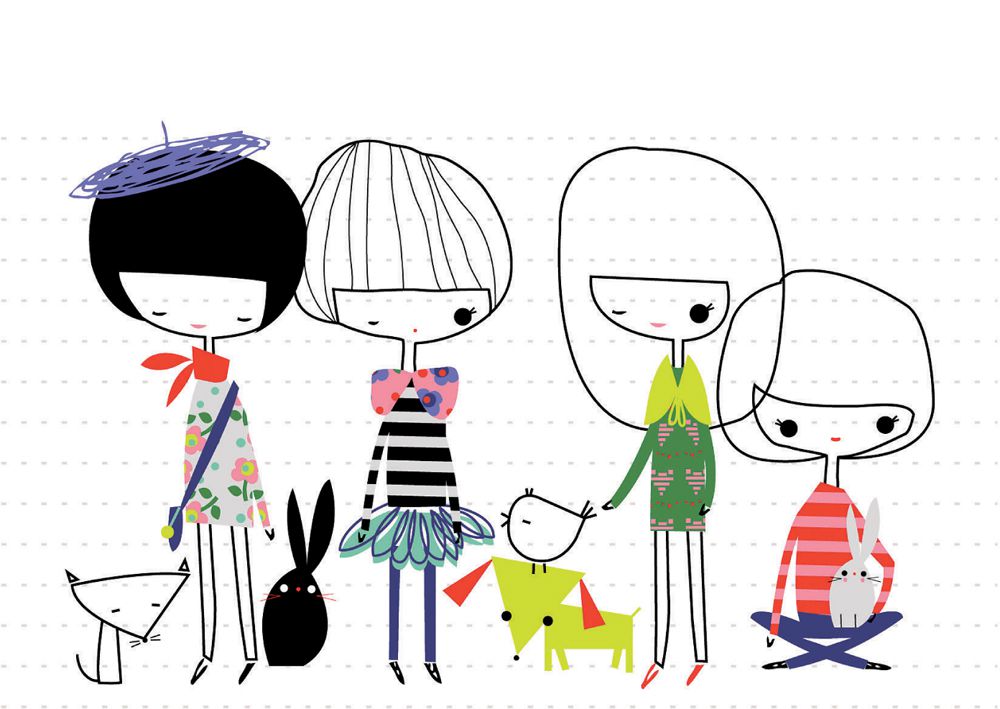
Art by Jillian Phillips
1. Make a cup of coffee.
2. Put NPR on my portable radio. (On weekends I put on Broadway musicals).
3. Place visual inspiration around me.
Here’s my work table. I was trying out some new pigmented inks I had just bought. One of my artists, Susy Pilgrim Waters, had brought me the gorgeous ranunculus. There’s my old-fashioned portable radio to the left of my water jar. I have a vanilla-scented candle tucked away in the mess, too. Gotta have the olfactory thing going, right? Not sure why I have three glue sticks.
There is an easy answer to how to make more money, and I’m going to tell you! Make your work great. In any field, the better you are at your work, the more you can give; the more you can give, the more people want what you have, and the more money you can make.
Anything that you’re interested in and passionate about, you’ll want to follow with a vengeance even if it seems unrelated to your art. It is related, because you’re interested in it.
Here’s an example. One of my artists, Diane Bigda, is a wonderful gardener. Over the years she’s introduced me to unusual plant species, such as hellebores. Traditionally, her editorial illustration work consisted primarily of people in environments, which she does brilliantly. Lately, however, I’ve encouraged her to draw some of the plants that she loves. Now she’s doing elegant floral monoprints with her printing press. And from this new work, she’s gotten a line of wall art. And I’m sure it’ll attract greeting cards and possibly bedding work!
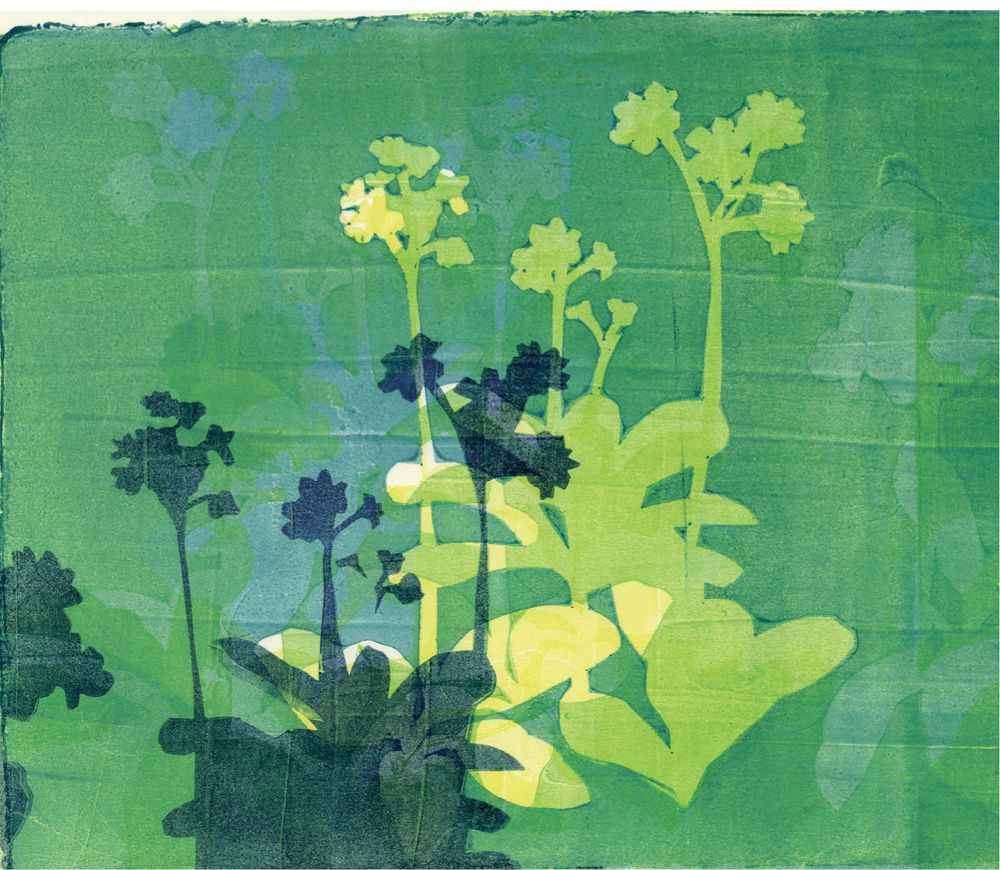
Monoprint by Diane Bigda.
1. Organization.
Are you a creativity machine? Always thinking of projects you want to do? Because you have a billion fabulous ideas, you’ll want to be really organized. That way, when you’re inspired, you can grab the right paintbrush or yarn or ink, and lack of organization won’t get in the way of your spirit and passion.
2. Tabletops.
A big, clean tabletop invites you to be creative and do work.
3. Lots of blank sheets of white paper for your ideas.
A whole ream of blank white paper is like an invitation to create. Just freely scribble on them, sketch on them, journal on them, and put them in a folder. Use the whole sheet. Write big. I like to leave stacks of blank white paper in various spots in my house so when an idea strikes, I’m ready.
4. It’s all about tubs (and baskets and jars).
I’m all about tubs for organizing, preferably clear so you can see what you’ve got. I also like the clear glass vases (like the kind you get with flowers from the florist) for stashing small things. I love to sort things in drawers. I know you know how fun it is to buy things—and then come home and you get to sort them.
5. Get help in your studio.
Even if you can’t afford to spend a dime on help, see if you can hire a high school student or an intern at a local college. You just may help a young person feel important and appreciated.
And one more extra special bonus secret of life . . . Let’s face it. We creative folks love stuff. And sometimes stuff loves us a little too much. So, hang a giveaway bag on your doorknob, and then think of all the people who will be so glad to get the things that you don’t need anymore. It makes the letting go of it easier.
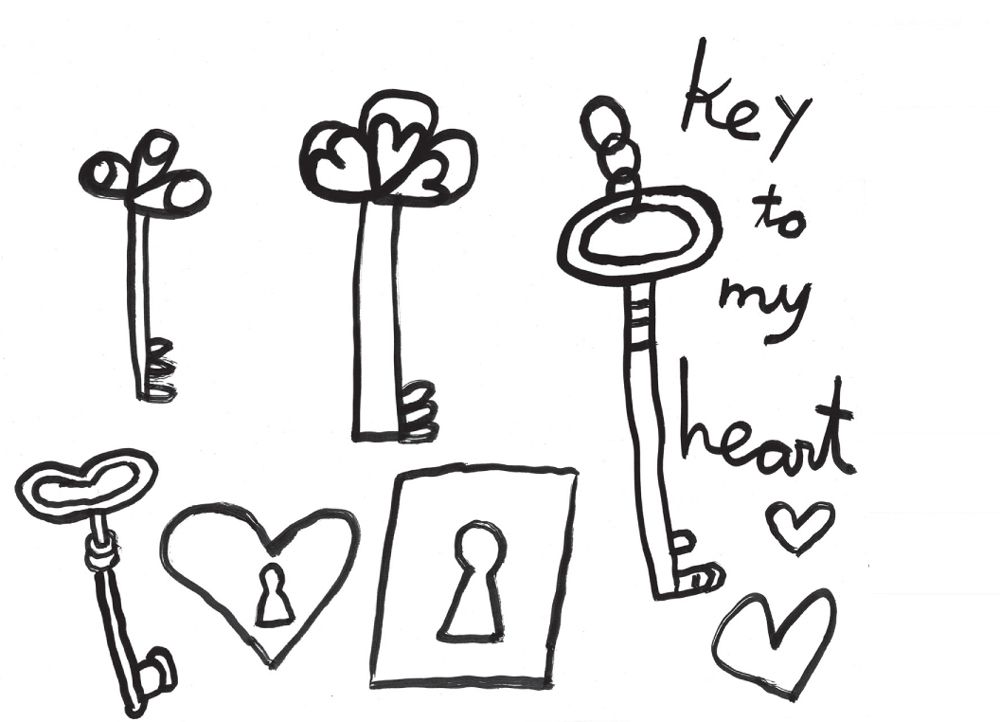
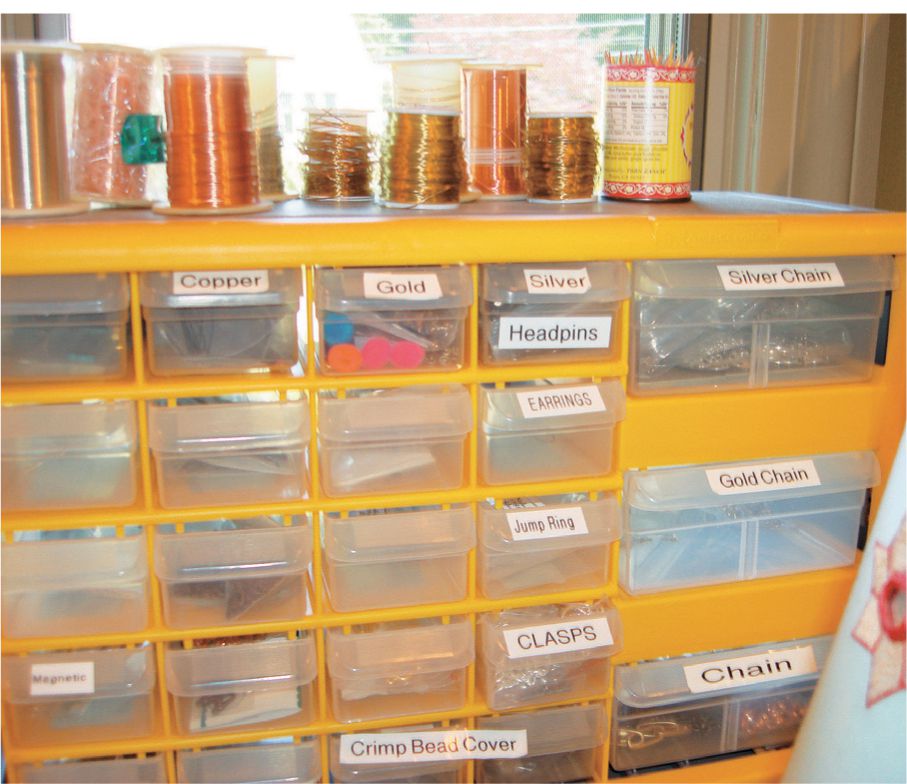
These hardware-store cabinets make great storage for your art supplies. Here, I’ve used one for my jewelry findings.
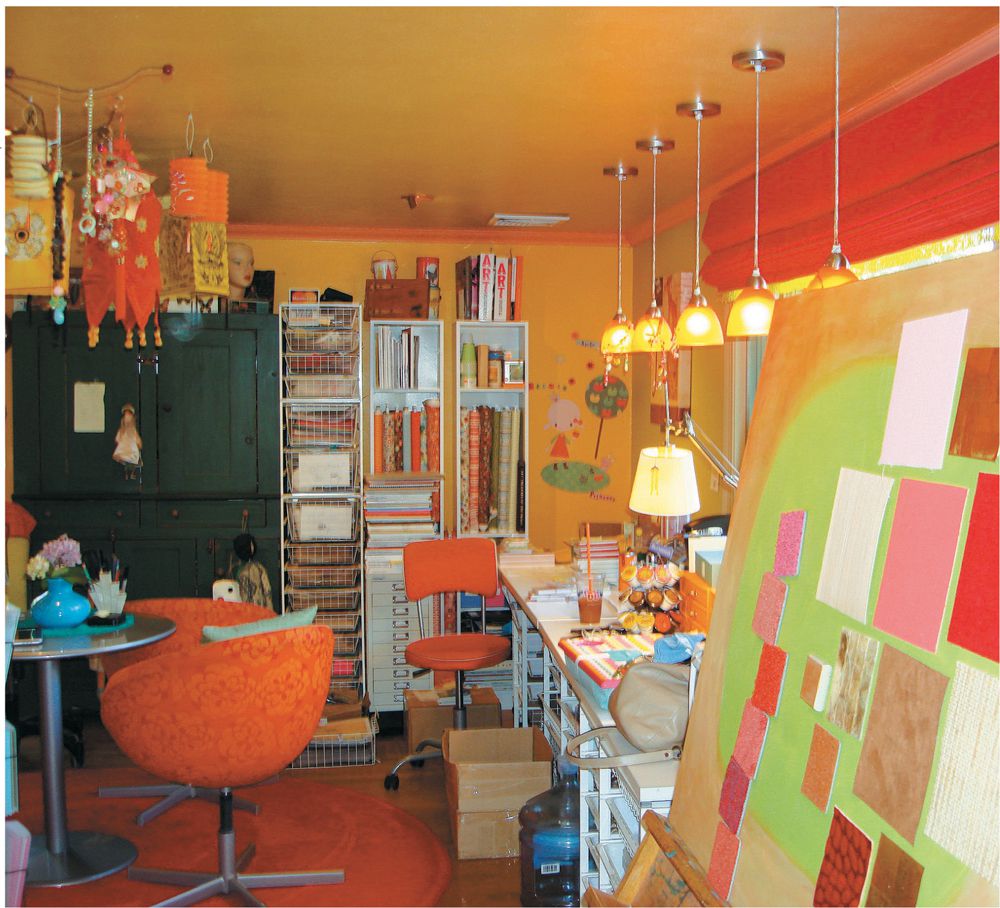
View of the painting area in my studio.
TIPS ON ORGANIZING THINGS
1. Make your organizing time enjoyable.
2. Put like with like.
3. Little things in little bins, big things in big bins.
4. If in doubt, throw it out—or give it away.
5. Sorting things by color is fun.
6. Tidy when your studio is tidy.
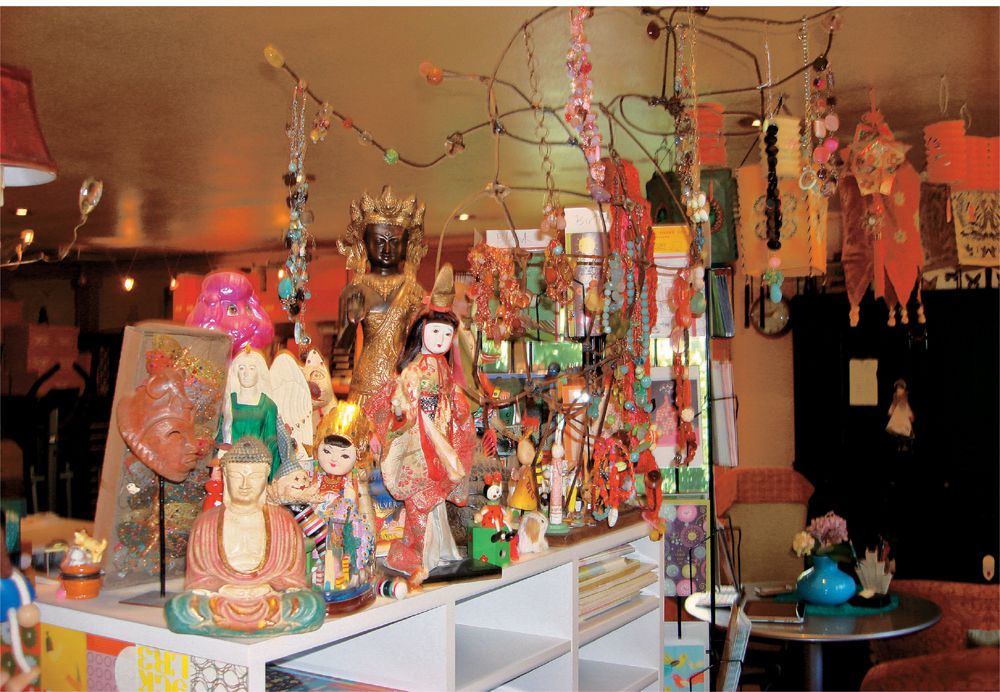
Studio collection of tchotchkes. My husband made the metal sculpture for my necklaces.
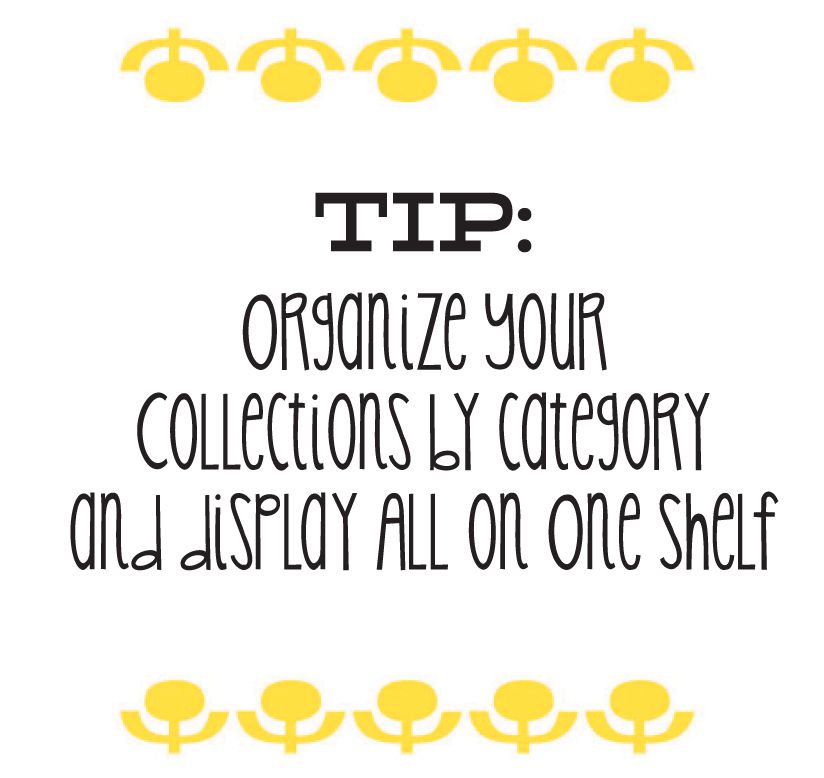
You cannot make magic when you’re rushed. If you’re stressed, you’re not allowing for that beautiful flow to happen. How can you have a more relaxed life?